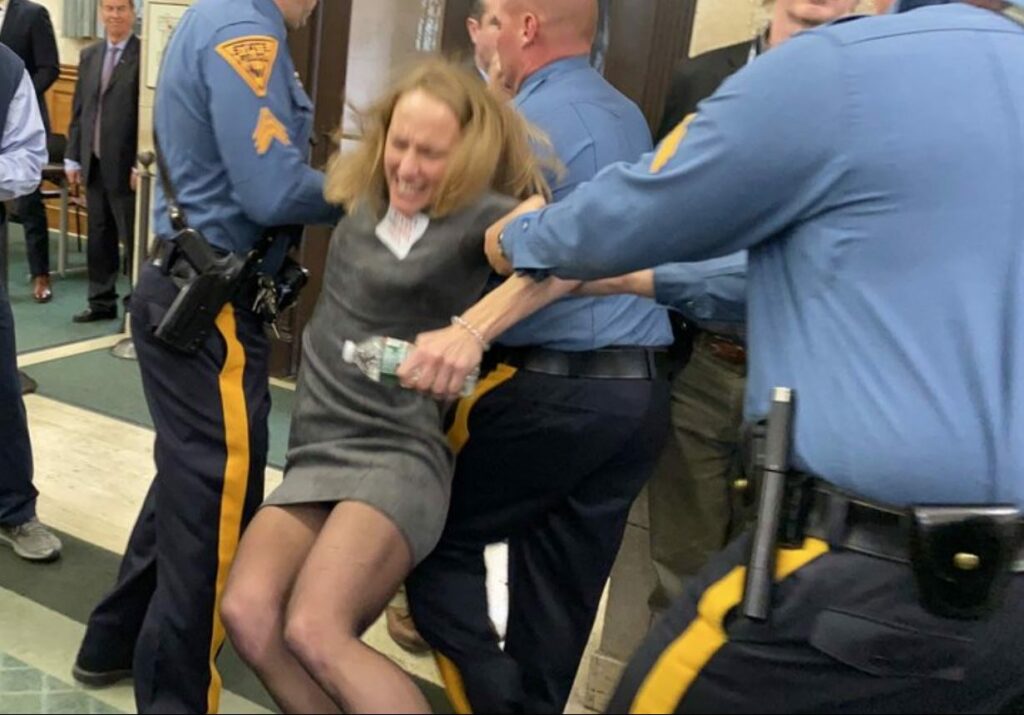Distilling The Altman Report
Listen to audio version of this article

TRENTON - It was one of those political moments that are hard to forget; the removal of activist Sue Altman from a Nov. 18 legislative hearing about tax incentive grants to companies connected to political boss George Norcross.
Altman was taken out of the hearing - a bit forcefully, but not violently - by state troopers after Sen. Bob Smith vaguely told authorities to remove the "back line." Altman for the record was not in the "back line."
The outcry that followed prompted a state Attorney General investigation of what happened. And this week, the AG, Gurbir Grewal, sent a letter about the incident to a state Legislative Committee.
When you distill about 14 pages to the central point, here's the bottom line:
The State Police did nothing wrong and were not influenced by politics. However, disorderly conduct charges against Altman, which had been pending, will be dismissed.
To someone like me who watched the spectacle that day in the hearing room, this was an unsatisfactory conclusion.
It's good that the charges against Altman, which were not very serious in the first place, will be dropped. And I can accept the idea that the police, who probably do their best to stay out of partisan disputes, were not influenced by politics.
Yet, the letter ignores a central fact - why was Altman removed?
The AG's review notes that the day began with committee chair Smith warning an overflow crowd to be respectful or else. And then, shortly after the hearing commenced, Smith infamously ordered the removal of the "back line" after a mild outburst.
The review acknowledges that Altman was nowhere near the back line - she was standing on the side of the room. But it says a state trooper approached her, because in his estimation she was "disrupting the proceedings."
This brings us to another point. What precisely does "disrupting the proceedings" or being "disorderly" mean?
There seems to be no official definition.
Gurbir's letter says, "It does not appear that the Legislature ever defined these terms for the purposes of determining when a member of the public should be removed from a committee room."
So in other words, it's up to the discretion of the individual running the show, or in this case, the relevant police officer. The problems with that are many. Is a little cheering disruptive? How about a lot of cheering or a little booing? And you also have to deal with some lawmakers who relish their power to eject people from a room.
It would be impossible to devise rules governing conduct at meetings that would be 100 percent perfect 100 percent of the time. Some of this always will come down to the views of the chair.
Yet, going forward it would be advisable to come up with rules and procedures with the public in mind, not elected officials. Let's remember that in a democracy, there should not be anything wrong with a little cheering or a little booing. Let's not confuse a committee hearing in Trenton with the U.S. Supreme Court.
Over the last few months, I have attended a number of congressional town halls where there was booing in the audience; sometimes audience members were booing each other. No one was ejected. After all, this was nothing all that serious and the normal order of things quickly resumed.
And that probably would have happened last Nov. 18 in Trenton if Smith hadn't so quickly moved to throw people out of the meeting.





